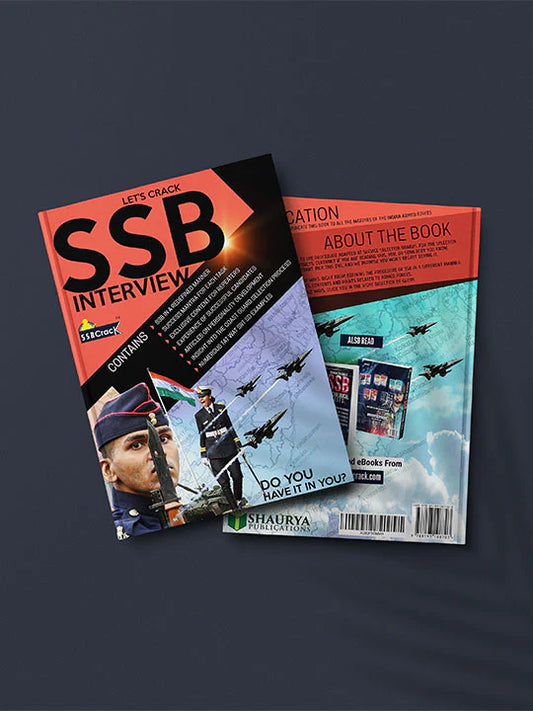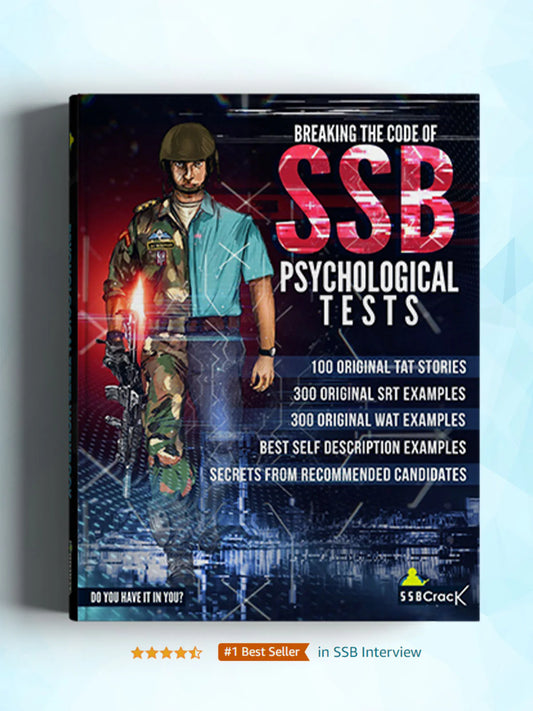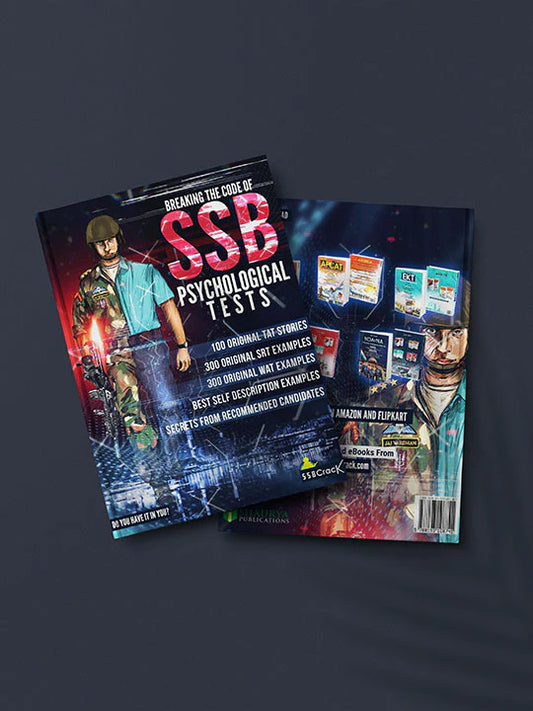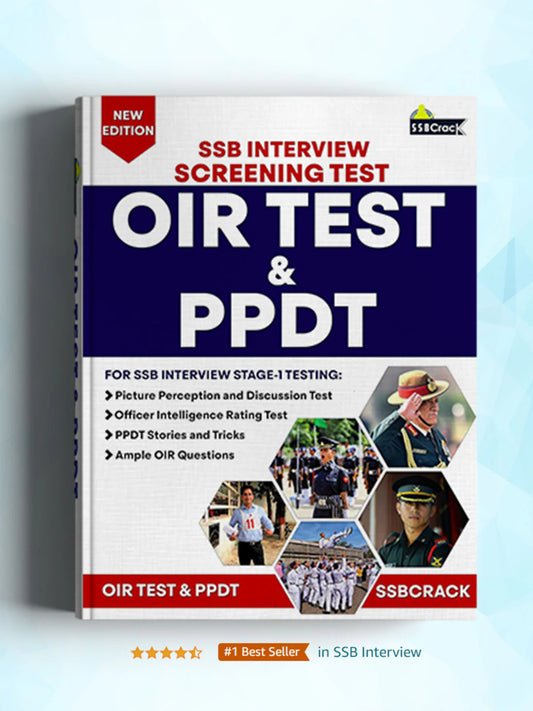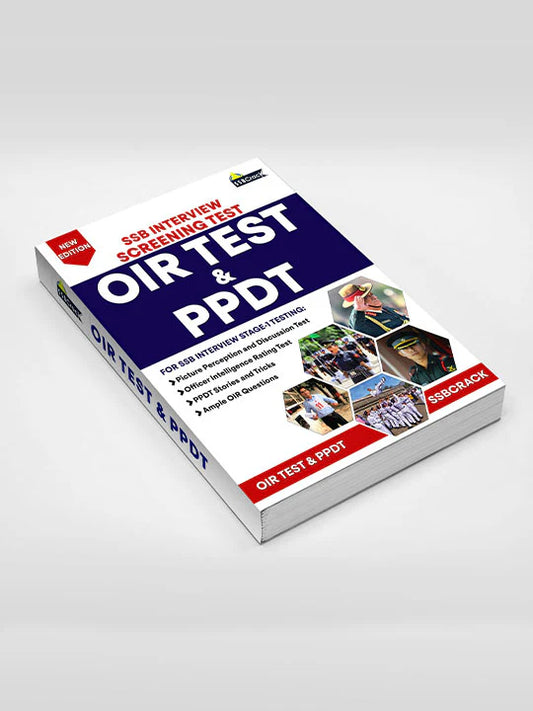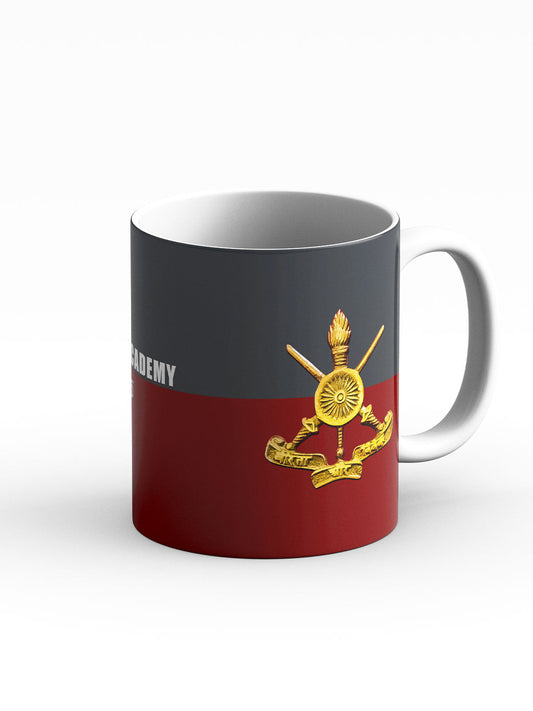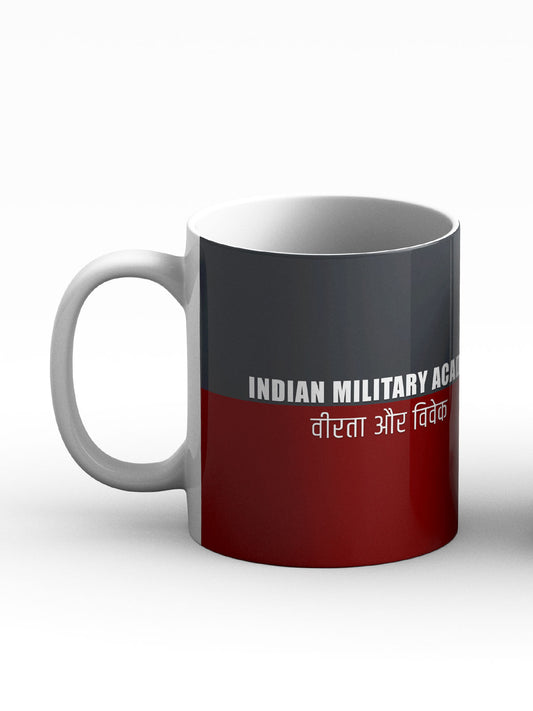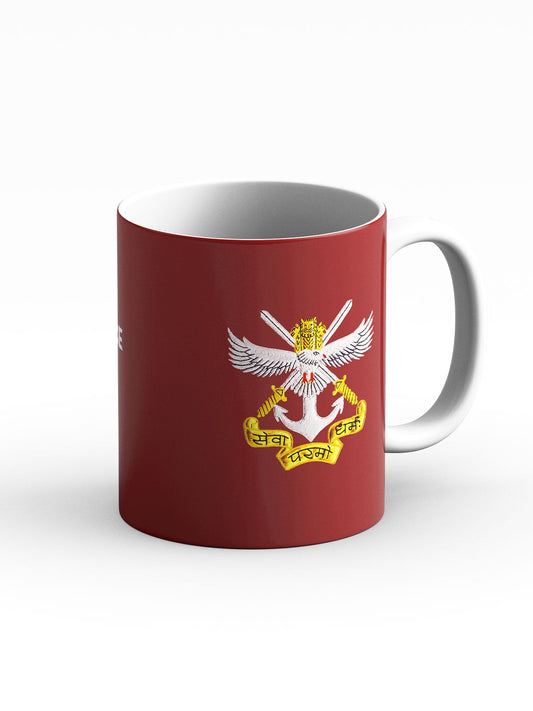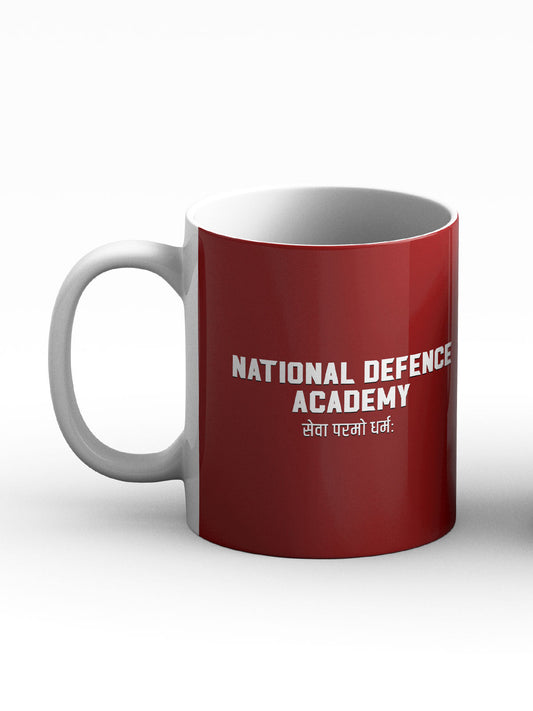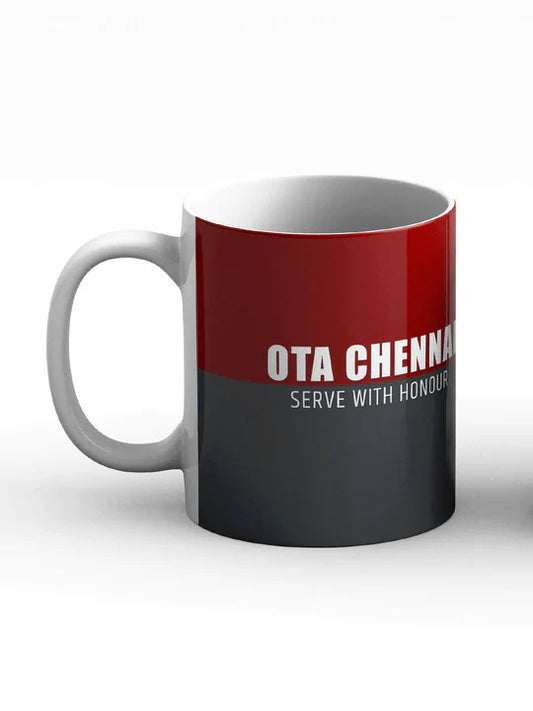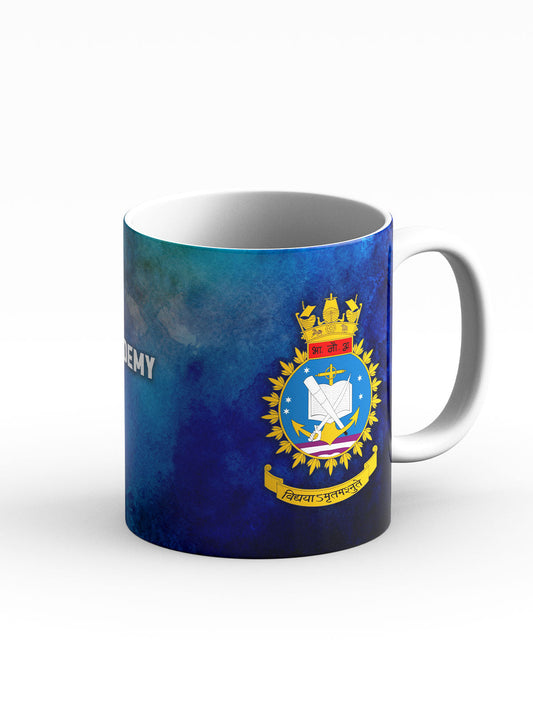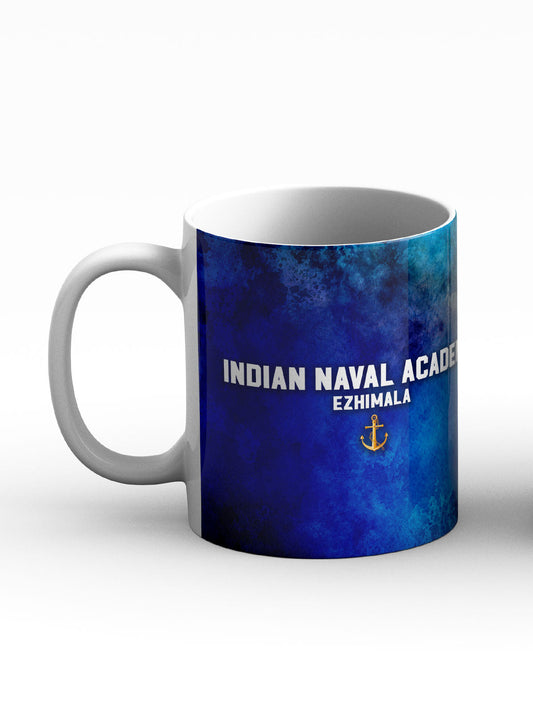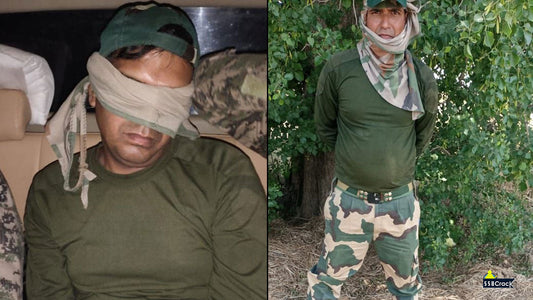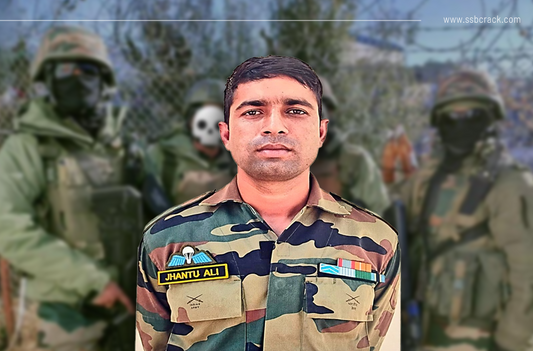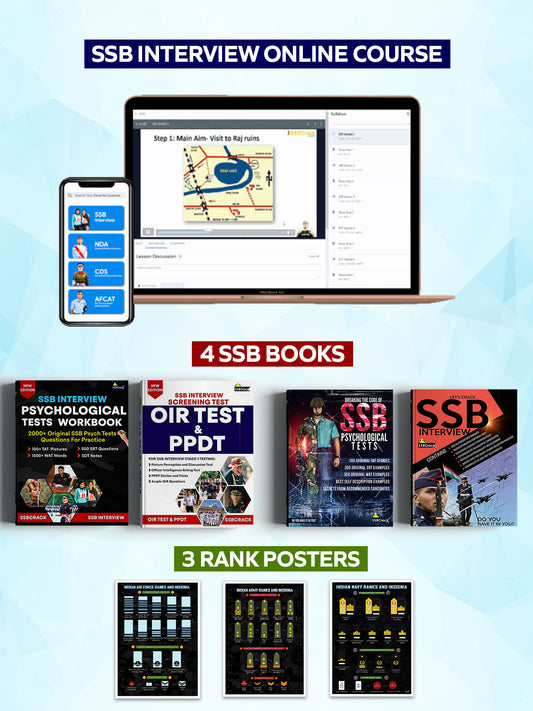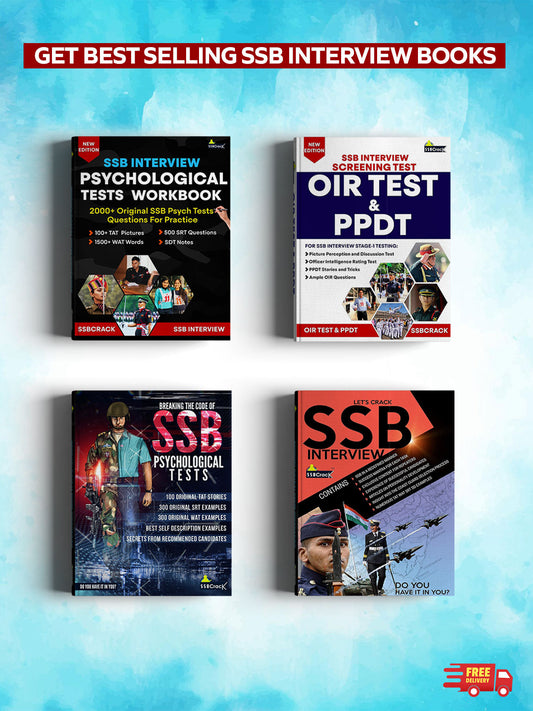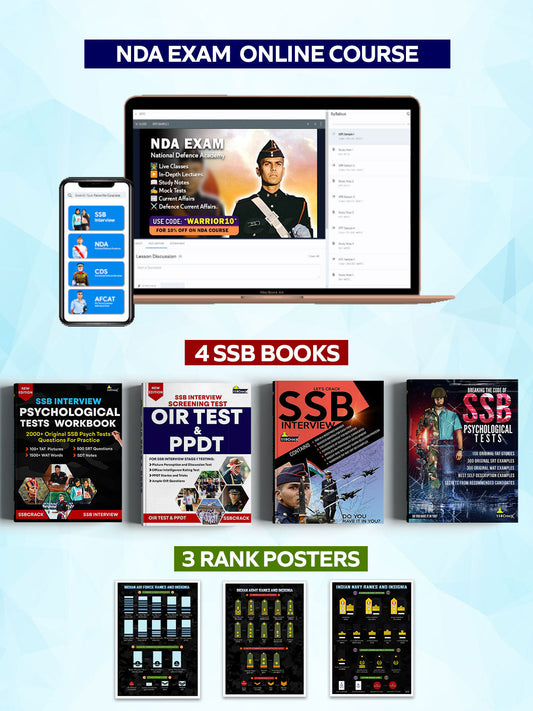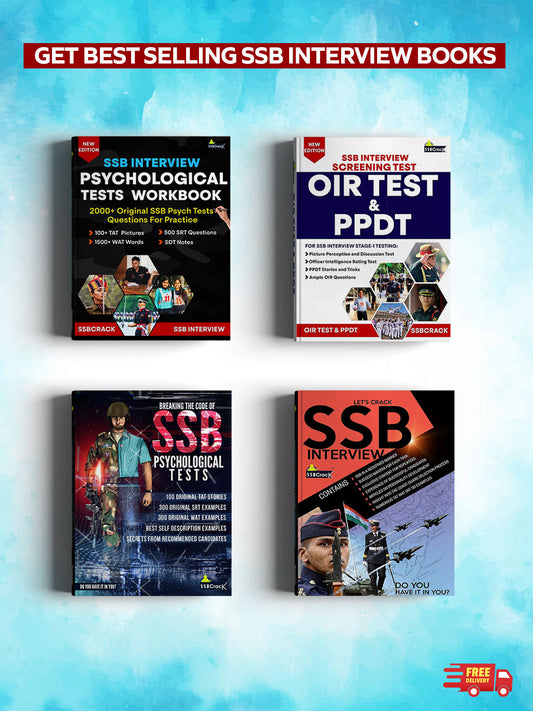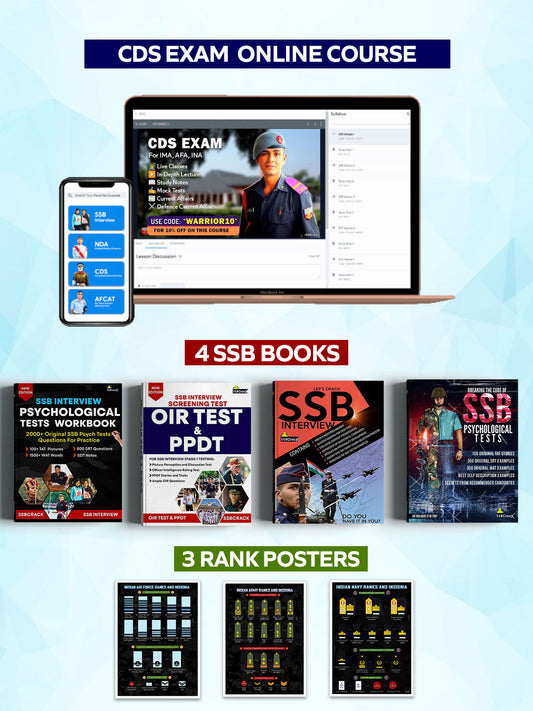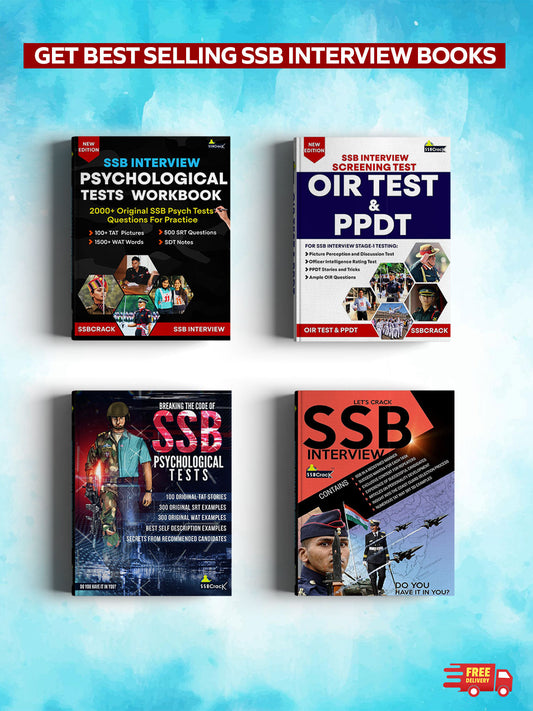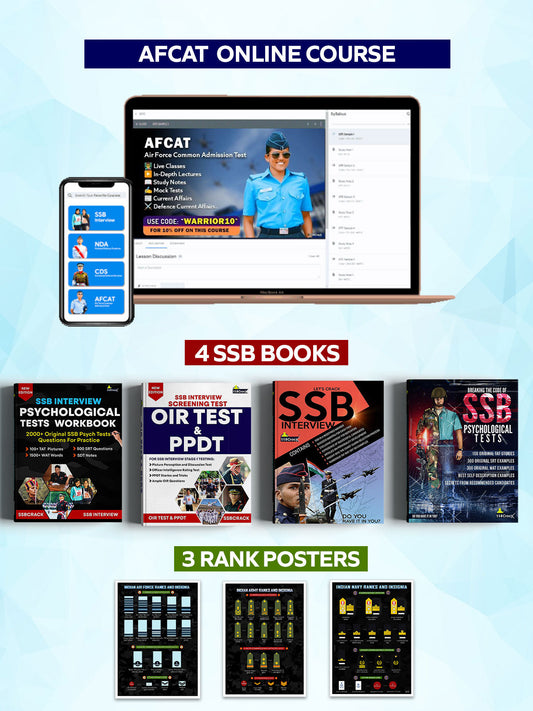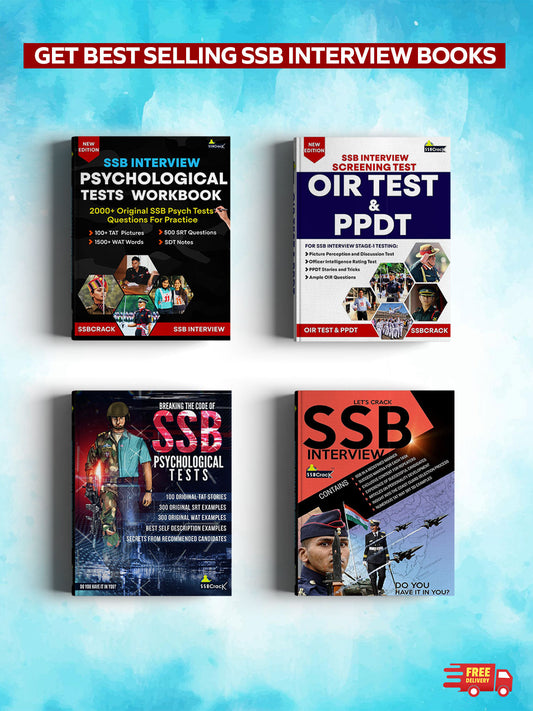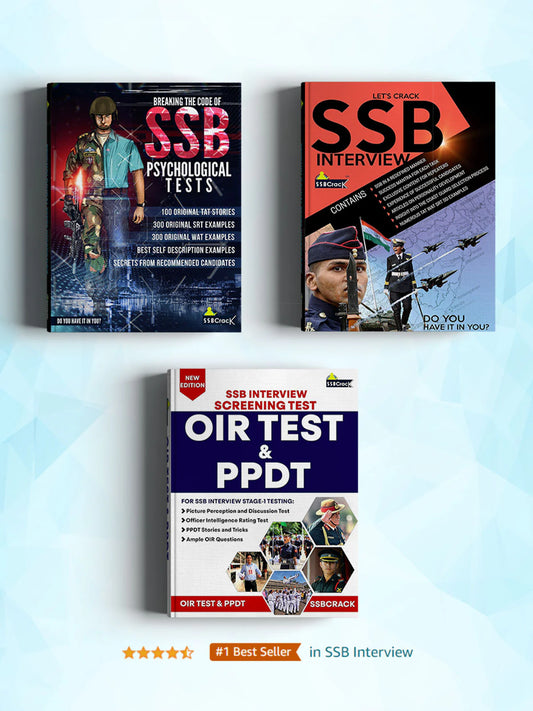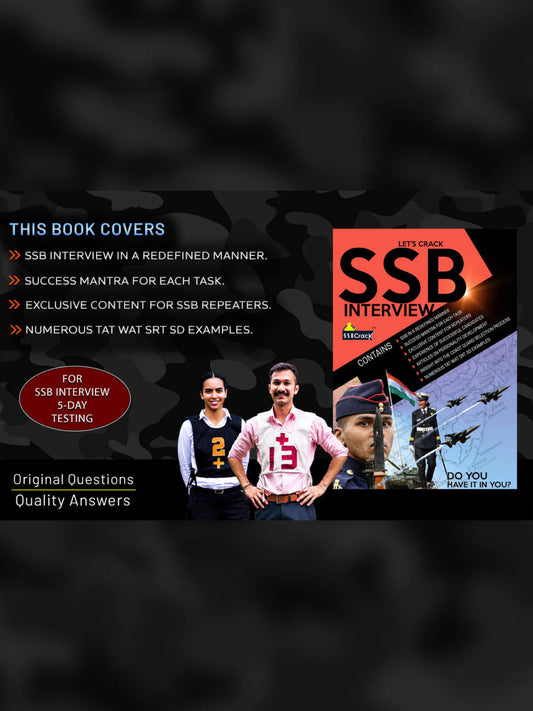How To Become A Lieutenant In The Indian Army?
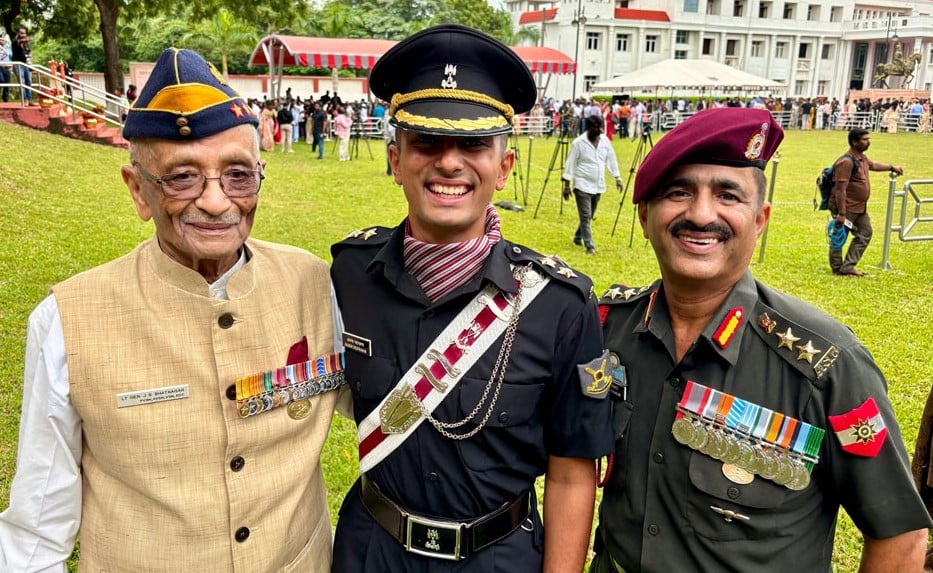
Becoming a Lieutenant in the Indian Army is a prestigious and rewarding endeavor that encompasses a blend of fierce competition, stringent selection processes, and rigorous training. The Indian Army stands as a pillar of national security and social order, with the rank of Lieutenant being the first step in a distinguished military career. It symbolizes leadership, responsibility, and the commitment to serve the nation. Understanding the pathway to achieving this rank requires insight into the eligibility criteria, selection process, training regimen, career progression, and the overall significance of military service in India.
SSB Interview Books Power Pack: 4 Must Read Books for Defence Aspirants
Rs. 1,760.00
Sale price
Rs. 1,399.00
Let's Crack SSB Interview Book [Paperback]
Rs. 390.00
Sale price
Rs. 360.00
Breaking The Code of SSB Psychological Tests [Paperback]
Rs. 390.00
Sale price
Rs. 360.00
OIR Test & PPDT - SSB Interview Screening Test - Stage 1 Testing [Paperback]
Rs. 490.00
Sale price
Rs. 375.00
Historical Context
The Indian Army has a long-standing tradition that traces back to ancient civilizations, serving as a defender of the nation’s sovereignty and integrity. Since the reorganization of the forces post-Independence in 1947, the Army has seen several structural reforms to enhance its efficiency and effectiveness. The rank of Lieutenant has historically been pivotal, representing young leaders commanding troops and making critical decisions in high-pressure scenarios. Over the years, advancements in training methodologies and recruitment processes have led to a more structured and systematic approach for individuals aspiring to join the ranks, making the path to becoming a Lieutenant both a challenge and an opportunity for emerging leaders.
Also Read: How to Become a Commanding Officer (CO) in the Indian Army?
Eligibility Criteria
To embark on this noble journey, aspiring candidates must meet specific eligibility criteria, which are divided mainly into age, nationality, educational qualifications, physical fitness, and marital status.
Age Limit
Candidates aspiring to become Lieutenants typically fall within the age range of 19 to 26 years. However, certain entry schemes allow for relaxations in age, particularly for candidates from specialized backgrounds. This ensures that the recruitment process remains inclusive while also inviting a diverse range of candidates.
Nationality
It is imperative for candidates to be citizens of India. This criterion underscores the importance of loyalty and commitment to the nation, which are essential attributes for military personnel.
Educational Qualifications
Candidates must possess a bachelor's degree from a recognized university or institute. For specific entry schemes, such as the Technical Entry Scheme (TES), completion of 10+2 education with a minimum of 70% in physics, chemistry, and mathematics is mandatory. This illustrates the Indian Army's emphasis on educational background and aptitude.
Marital Status
For most entry modes, candidates must be unmarried. This requirement is in place to ensure that candidates can dedicate themselves fully to the demanding nature of military service without personal distractions.
Physical Fitness
Physical fitness plays a crucial role in a candidate's eligibility. The following standards are prescribed:
- A minimum height of 157.5 cm for males and 152 cm for females.
- Proportionate weight according to age and height.
- Vision criteria are 6/6 in one eye and 6/9 in the other eye, with corrections permissible to 6/6. This physical wellness is integral to performance, as the role demands significant physical endurance and resilience.
Indian Military Academy IMA Coffee Mug
Rs. 699.00
Sale price
Rs. 499.00
NDA Service Before Self Coffee Mug
Rs. 699.00
Sale price
Rs. 499.00
Officers Training Academy OTA Chennai Coffee Mug
Rs. 699.00
Sale price
Rs. 499.00
Indian Naval Academy INA Ezhimala Coffee Mug
Rs. 699.00
Sale price
Rs. 499.00
Selection Process
Once the eligibility criteria are met, candidates must navigate a highly competitive selection process, primarily comprising written examinations and interviews.
Written Examination
The journey begins with the written examinations, which may include:
- National Defence Academy (NDA) Exam: For candidates after their 10+2, conducted by the Union Public Service Commission (UPSC).
- Combined Defence Services (CDS) Exam: For graduates seeking entry into the Indian Army.
- Other specific exams depending on the entry mode.
These examinations assess a candidate's aptitude, general knowledge, English proficiency, and logical reasoning skills, making them a crucial first step in the selection process.
Direct SSB Interview Entries
Certain direct entry routes allow candidates to bypass the written exam and receive a direct call for the SSB (Services Selection Board) Interview. These include:
- Technical Entry Scheme (TES): Direct SSB interview for 10+2 candidates with PCM.
- TGC Entry (Technical Graduate Course)
- SSC Tech Entry (Short Service Commission - Technical)
- NCC Special Entry
- JAG Entry (Judge Advocate General Branch)
SSB Interview
Following the successful completion of the written examination, candidates are invited to a Service Selection Board (SSB) interview. This comprehensive five-day assessment includes:
- Psychological tests designed to evaluate mental agility.
- Group tasks that assess teamwork and collaboration.
- Personal interviews that focus on leadership potential and interpersonal skills.
The SSB is known for its stringent evaluation methods, ensuring that only the most capable candidates progress to the next stage of selection.
Medical Examination
Candidates who clear the SSB interview must then undergo a medical examination to ensure they meet the Indian Army's medical standards. This examination is thorough and includes psychological testing, physical assessments, and health evaluations to confirm that candidates are fit for military service.
Training Process
After successfully clearing the selection process, candidates embark on their training journey at either the Indian Military Academy (IMA), Officers Training Academy (OTA) Chennai and Gaya.
Indian Military Academy (IMA) and Officers Training Academy (OTA)
The duration and structure of training vary based on the entry mode:
- NDA Entrants: Candidates undergo a three-year training at the NDA, followed by a year at the IMA.
- CDS Entrants: Following selection, they participate in 18 months of training at the IMA for permanent commission or 49 weeks at the OTA for those opting for short service commissions.
- Technical Graduate Course (TGC) and Technical Entry Scheme (TES): Candidates receive one-year training at the IMA and OTA Gaya Respectively.
Training Curriculum
The training curriculum is exhaustive and includes:
- Physical Fitness Routines: Regular fitness training to ensure candidates are physically prepared.
- Theoretical Classes: Instruction on military tactics, history, and strategy.
- Field Exercises: Practical experiences that simulate real-world operations.
- Leadership Development Programs: Essential for nurturing future leaders who will be entrusted with critical responsibilities.
This extensive training regimen aims to equip candidates with the necessary skills, discipline, and judgment required in their roles as Lieutenants.
Entry Modes
The Indian Army facilitates multiple entry modes to accommodate different educational backgrounds and career paths. Understanding these modes is crucial for aspiring candidates.
National Defence Academy (NDA)
The NDA remains one of the most prestigious and sought-after entry points for young candidates after 10+2. Conducted by the Union Public Service Commission (UPSC), the selection process includes a written examination followed by an SSB interview and medical evaluation. Successful candidates undergo three years of rigorous training at the NDA, Khadakwasla, followed by specialized training at their respective academies—IMA (Army), INA (Navy), and AFA (Air Force)—before commissioning as officers.
Combined Defence Services (CDS)
The CDS examination serves as the primary entry route for graduates who wish to join the Indian Armed Forces. Conducted by the UPSC, it involves a competitive written examination, followed by the SSB interview and medical tests. Successful candidates join the Indian Military Academy (IMA), Officers Training Academy (OTA), Indian Naval Academy (INA), or Air Force Academy (AFA), where they undergo intensive training to prepare for leadership roles in the armed forces.
Technical Graduate Course (TGC)
The TGC is a specialized entry for engineering graduates who wish to serve in technical roles in the Indian Army. Candidates are shortlisted based on their academic performance and invited for an SSB interview, followed by a medical examination. Selected candidates undergo one year of rigorous pre-commission training at the Indian Military Academy (IMA), Dehradun, before being commissioned as officers.
Technical Entry Scheme (TES)
The TES provides a pathway for candidates with a science background who have completed their 10+2 with Physics, Chemistry, and Mathematics. Shortlisted candidates are called for the SSB interview and medical tests. Upon selection, they undergo four years of training, including a B.Tech degree, followed by one year of military training at the Indian Military Academy (IMA), Dehradun, before commissioning as officers.
Short Service Commission (SSC) Technical Entry
Designed for engineering graduates, the SSC Tech Entry provides an opportunity to serve in technical roles in the Indian Army. After clearing the SSB interview and medical examination, candidates undergo training at the Officers Training Academy (OTA), Chennai, followed by a Short Service Commission.
Judge Advocate General (JAG) Entry
The JAG Entry is for law graduates who aspire to serve as legal officers in the Indian Army. Candidates undergo a selection process involving shortlisting, SSB interviews, and medical assessments. Successful candidates are trained at the OTA, Chennai, before commissioning as Short Service Commission officers.
NCC Special Entry Scheme
Open to NCC C Certificate holders with a minimum ‘B’ grade, this entry allows candidates to join the Indian Army without a written exam. Eligible candidates are shortlisted based on merit, followed by SSB interviews and medical evaluations. Training is conducted at OTA, Chennai, after which they receive a Short Service Commission.
Army Dental Corps (ADC) Entry
The Army Dental Corps offers a prestigious career opportunity for dental graduates to serve as commissioned officers in the Indian Army. Candidates with a Bachelor of Dental Surgery (BDS) or Master of Dental Surgery (MDS) from a recognized university, along with a valid Dental Council of India (DCI) registration, are eligible to apply. The selection process involves shortlisting based on academic merit, followed by an interview and medical examination. Selected candidates are granted a Short Service Commission (SSC), with the possibility of Permanent Commission (PC) for deserving candidates.
Army Medical Corps (AMC) Entry
The Army Medical Corps provides an esteemed platform for medical graduates to serve as officers in the Indian Armed Forces. Candidates with an MBBS degree or higher qualification from an institution recognized by the National Medical Commission (NMC) are eligible. The selection process includes shortlisting based on academic performance, followed by an interview and medical examination. Selected candidates join as Short Service Commission (SSC) officers, with an opportunity to opt for Permanent Commission (PC) based on merit and service requirements.
Career Progression and Salary
Once commissioned as Lieutenants, newly trained officers can expect a structured career progression within the Army, supported by professional development opportunities.
Commissioning
Upon completion of their training, candidates are officially commissioned as Lieutenants and assigned to various regiments. This commissioning signifies their readiness to undertake significant responsibilities.
Salary
The basic pay for a Lieutenant is set within the pay scale of ₹15,600 to ₹39,100, with a grade pay of ₹5,400. This translates to a cash-in-hand salary of approximately ₹56,100 per month according to some sources. Including various allowances and benefits, the total monthly salary can reach around ₹68,000. This total includes basic pay, grade pay, and additional allowances such as Dearness Allowance and Military Service Pay. The overall salary for a Lieutenant can range from ₹56,100 to ₹1,77,500 per month, depending on experience and specific allowances received.
Career Advancement
The trajectory of a military career typically follows a structured progression based on merit, experience, and further qualifications. From Lieutenant, individuals can advance to positions such as:
- Captain
- Major
- Lieutenant Colonel
- Colonel and beyond
Career advancement also opens up opportunities for specialized training and higher responsibilities, further enhancing professional development within the armed forces.
Preparation and Resources
Aspiring candidates must prepare strategically for the competitive selection process, leveraging various resources and study materials.
Coaching and Study Materials
Enrollment in coaching programs is advisable for higher chances of success in entrance examinations. Resources that can be beneficial include:
- Study Guides and Books: For foundational knowledge and exam preparation.
- Online Courses and eBooks: These often offer comprehensive coverage of exam syllabi and can be more flexible.
- Mock Tests and Practice Papers: Essential for acclimatizing to the exam format and pressure.
Networking
Building a network with current or former army personnel can provide candidates with valuable insights. Engaging in discussions and seeking advice can illuminate the path forward and help in preparing effectively for the SSB interview.
Challenges and Solutions
The path to becoming a Lieutenant is fraught with challenges that candidates must navigate. These include the intense competition among applicants, the physical and mental demands of selection processes, and the rigorous training involved.
Potential Challenges
- High Competition: The number of applicants often vastly outstrips available positions.
- Physical and Mental Tests: Candidates might struggle to meet rigorous standards, particularly in the SSB rounds.
- Academic Pressure: Balancing studies and preparation can be demanding, causing stress and anxiety.
Proposed Solutions
- Consistent Preparation: Adopting a structured study schedule and physical training regimen can help candidates meet the necessary criteria.
- Mental Health Resources: Utilizing support systems like counseling services, group studies, and relaxation techniques can alleviate stress.
- Time Management: Setting priorities and focusing on essential areas of preparation can ensure a more balanced approach.
Future Trends and Predictions
The landscape of military recruitment is evolving rapidly in response to changing societal norms, technological advancement, and global military dynamics. The following trends can be anticipated in the near future:
- Increased Use of Technology: Digital platforms for exam preparation and training simulations could enhance learning experiences.
- Diversity in Recruitment: Greater emphasis on diversity and inclusivity will likely shape recruitment policies and practices.
- Focus on Mental Resilience: As the understanding of mental health in the military evolves, so will the inclusion of mental training programs during selection and training.
Conclusion
In conclusion, becoming a Lieutenant in the Indian Army represents both a significant achievement and a commitment to serving the nation. The journey requires meeting specific eligibility criteria and successfully navigating a competitive selection process, followed by rigorous training that mold individuals into responsible leaders capable of defending the nation's sovereignty. With structured career progression and opportunities for advancement, the role of a Lieutenant is not only a personal milestone but also a noble commitment to the defence of India and its values.

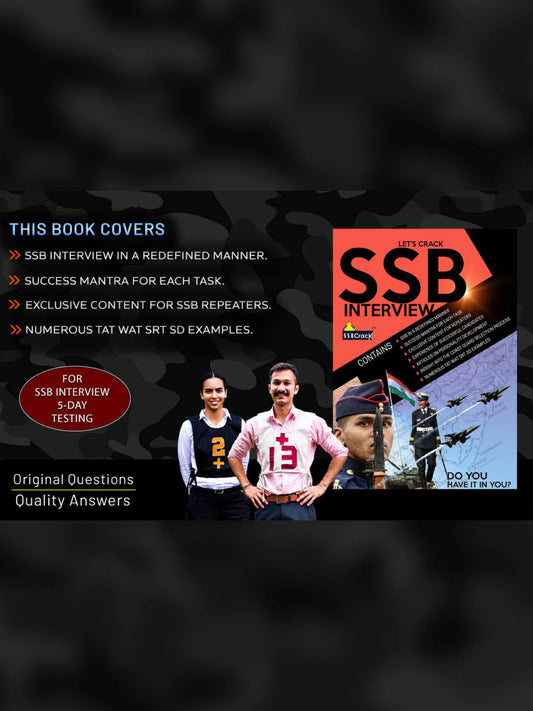
![Let's Crack SSB Interview Book [Paperback]](http://shop.ssbcrack.com/cdn/shop/files/ssb-books.webp?v=1736351621&width=533)
